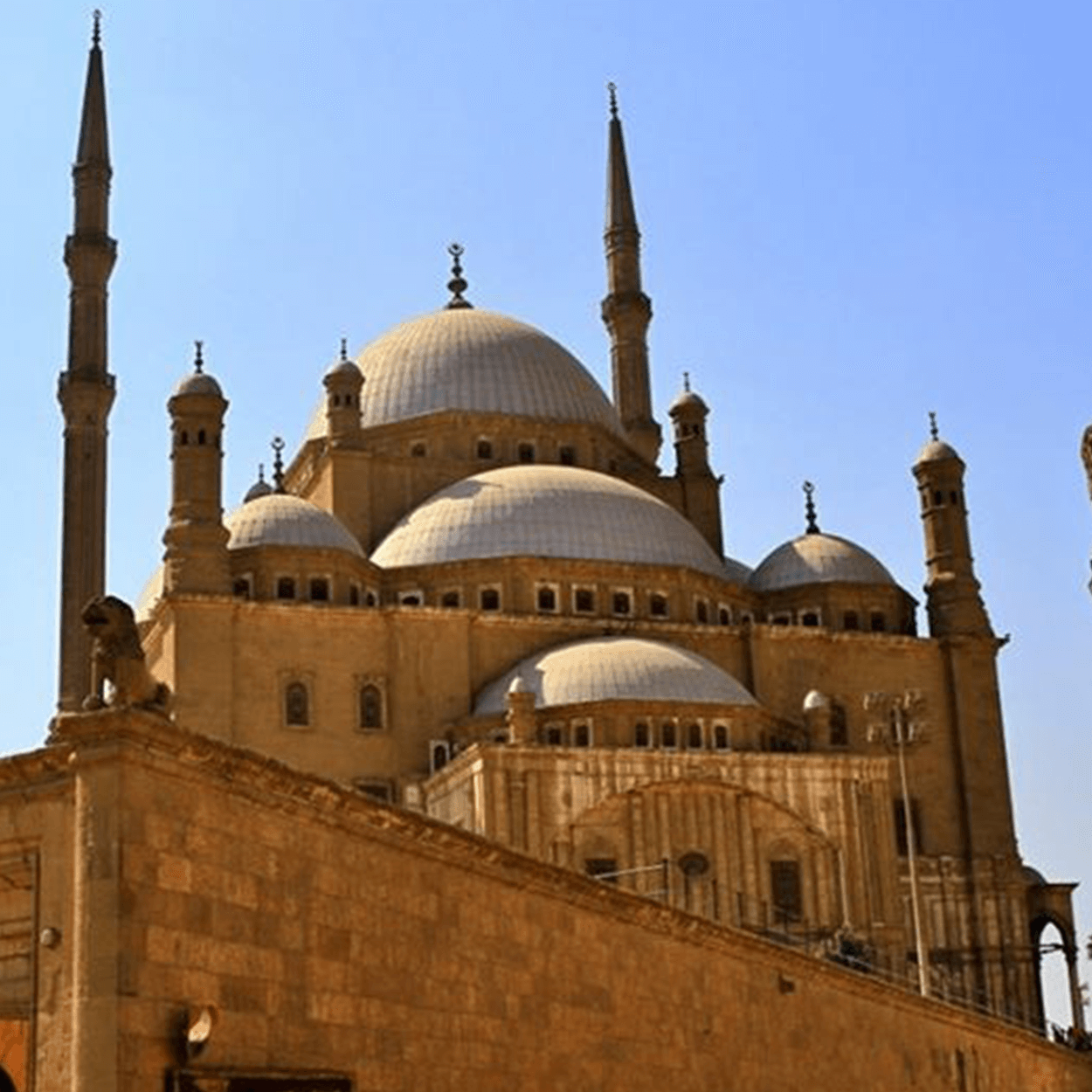Mohamed Ali Mosque
The Great Mosque of Muhammad Ali Pasha or Alabaster Mosque is a mosque situated in the Citadel of Cairo in Egypt and commissioned by Muhammad Ali Pasha between 1830 and 1848.
Muhammad Ali Mosque is the largest Ottoman mosque to be built in the early 19th century.
When Mohammad Ali Pasha assumed power in the early 19th century, he had the mosque built in memory of Tusun Pasha, the eldest son of Mohammad Ali Pasha, who died in 1816. He also had all Mamluk buildings in the Citadel demolished and had the complex completely rebuilt.
Greek architect Jacob Bushnaq of Istanbul designed the Mohammad Ali Mosque. The Mohammad Ali Mosque was designed to fit the Turkish ideals, a reproduction of the best mosques found in Istanbul. Set on the foot of the Mugattam Hills, the mosque dominates the whole Citadel, and it is the most visible monument on the Cairo skyline.
The Mohammad Ali Mosque is eminently Turkish in style, echoing its Ottoman origins. The use of slim minarets, cascading domes, spacious interiors, large chandeliers, walls decorated with Thuluth inscriptions and beautiful hanging globe lamps are all reflecting the mosques found in Istanbul. On the inside, the rooms reflect some French Rococo as well as Art Nouveau influences, with heavily ornamentation of lines of green, red and gold. All in all, the mosque is as colorful as a Fabergé egg, and the exteriors are just exceptional. Interestingly, the mosque is made of some unusual choice of materials: alabaster and metal.





